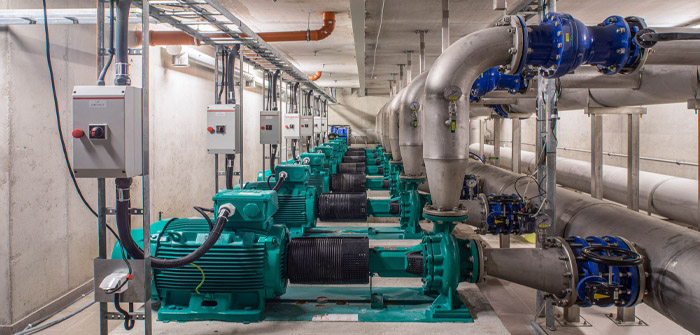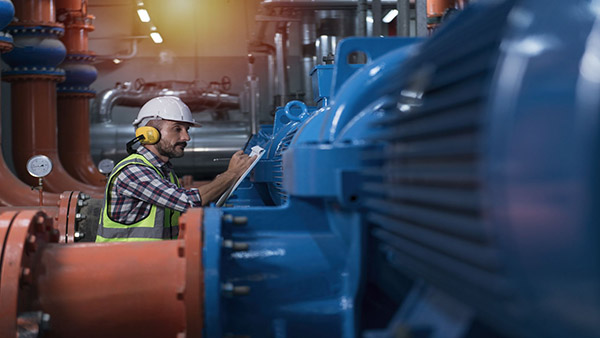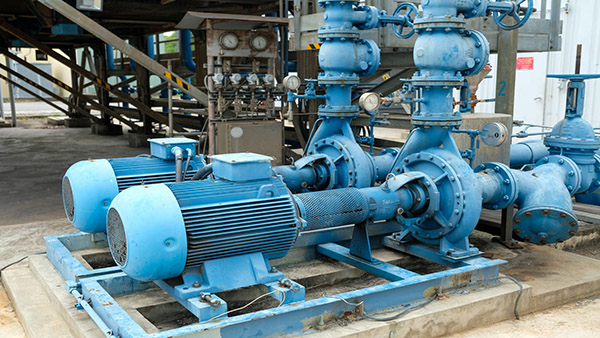A plumbing engineer would have multiple considerations to think about before coming up with a pump system design and pump selection that would be suitable for a high-rise building structure. For one, a high-rise structure consists of multiple levels. Most of these levels would feature a large number of apartments for residential, commercial, or office use.
Some levels might have their toilets and bathrooms. There might also be a common or public toilet at each level. Water from the municipal system can’t reach the top of these levels unless the building has a booster pump. To address this situation, they could ask a centrifugal pump manufacturer for a suitable pump to increase the water pressure and move water upwards to the higher levels of the building.
Physical Challenges In High Rise Buildings
A concrete example of a high-rise building would be a typical mixed-use office and commercial complex. This would have multiple floors and each floor is typically divided into several offices and rooms. Without a water booster pump, it’s doubtful whether water from the regular pressure coming from the municipal supply would ever be able to climb up to the height of the building. It’s the sheer size of a high-rise building’s plumbing network that makes a water booster pump system a necessity.
The basic idea here is that water needs that boost to be able to climb up 10, 15, 20, 30, or even more floors to deliver water to the individual units and offices on each floor. The pump selection should be suitable and capable of delivering and distributing water supply to all the faucets, service lines, showers, and other water outlets on each floor from the ground to the highest.
Pumps You Can Choose From
You can choose from two main categories of pumps for your high-rise building. These are dynamic pumps and positive displacement pumps. The fluid is controlled in positive displacement pumps by making the pump move at the same speed regardless of how fast the fluid is moving at the moment it goes into the inlet valve. Dynamic pumps increase the speed of the fluid. This speed becomes pressure when it reaches a slowed or blocked outlet.
Here are some of the different types of pumps that you can choose from:
- Centrifugal Pumps. This is one of the most common dynamic pumps. To create suction, centrifugal pumps typically use one or more rotating impellers.
- Reciprocating Pumps. Positive displacement pumps employ a piston to push in and out of the fluid to generate suction.
- Rotary Pumps. This type of pump drives fluid flow by creating high levels of pressure discharge. This pressure is created by meshing two gears together.
Applications Of Water Pump In Commercial Context
Water booster pumps are designed to meet the specific requirements of a high-rise commercial building, and this isn’t limited to increasing water pressure to deliver and distribute water to the higher levels of the building structure. Here are some of the other common applications of a water pump system in a high-rise commercial building context.
- Water Movement. One of the most fundamental uses for a water booster pump system is water movement. The principal job of a water booster pump installed as part of the water distribution system of a high-rise building is to make sure water is equally distributed and made available to all the building occupants.
- Pressurizing Water/ Fluids. A water booster pump system is frequently used to pressurize water or fluids, which is another prevalent use.
- Fire Suppression. Another important application of a water booster system is that it’s an essential component of a fire suppression system for the building. Although most buildings have fire extinguishers in place on each floor, they still require water pumps to pressurize water for their emergency fire suppression systems. In case a fire breaks out, the pumps will be of great help to the fire suppression teams.
- Flood Prevention. Water booster pumps are also needed to prevent flooding in high-rise commercial buildings. If the building structure was built in a flood-prone location, water pumps would be extremely useful if excessive rainfall caused flooding in the basement and ground floors.
Technical Factors Considered In Selecting Booster Pump
There are numerous technical factors to consider before your plumbing engineer can decide on what type of pump solution system to recommend for use in your high-rise building. Here are some of the factors they have to consider:
- Fluid Properties
They must consider the range of applications that the pump solution system will cover, as well as the various types of fluids that it will manage. Other fluids move through the pipes and drainage systems of high-rise buildings besides potable water. Oils, cleaning chemicals, viscous fluids, acids, abrasive compounds, and even slurries are examples of these.
- Pump Capacity (Flow Rate Of Water)
The plumbing engineers also need to know how much volume and fluid pressure the pump solutions can manage on a daily, weekly, monthly, and annual basis. They’ll need this to design and build a pump system that will fulfill the flow rate needs of the high-rise structure.
- Specialized Performance Factors
The plumbing engineers also need to take into account specialized performance factors when they design and build the pump system for your high-rise building. Some of the technical indicators that they have to consider are fluid velocity, fluid pressure, operating temperature, static head, elevation, friction head losses, variable speed drive, and output design. They must assess the suction conditions in your structural environment, not only the piping system because suction circumstances account for 90% of pumping difficulties.
- Reliability
Your plumbing engineers need to make sure that the pump solution they select for your building’s pump system is highly reliable. If they pick the wrong choice, you might find yourself having to choose between redoing the entire thing or putting up with a system that gives you a lot of headaches in frequent downtimes and repairs.
- Ease Of Use
If you don’t want to pay for outsourced services just to operate your pump system, you should ask your plumbing engineers to design and build you something that’s not too hard to use.
- Energy Efficiency
A pump system is supposed to enhance high-rise building management but it doesn’t have to come with hefty energy bills. Ask your plumbing engineers to select energy-efficient systems.
- Environmental Factors
It would also be good for your plumbing engineers to take into account compliance with water distribution regulations and environmental laws when they design and build your pump system. Most of them are trained in these things, but you should tell them if there are any special considerations that they have to note within your zone.
Conclusion
Selecting a suitable pump for a high-rise building involves a lot of physical and technical considerations, not the least of which is the height of the building. Plumbing engineers need to do the math on what would work best for each high-rise structure. They have to take into account what pump system would work best given the specific requirements of the building.








